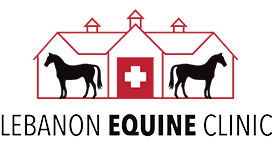
Lebanon Equine Diagnostic Solutions
Caring for Horses in Warren County & Beyond
Horses cannot verbally communicate their discomfort or pinpoint the source of their pain. That means good diagnostics are everything. Our Lebanon equine diagnostic solution technicians gain valuable insights into your horse's issues by employing digital imaging technologies. This enables us to identify and define the problem accurately, paving the way for a tailored treatment plan to restore the horse to health.
We’re available 24/7. Call the Lebanon Equine Clinic today at (513) 540-3113 for the help your horse needs.
The Benefits of Digital Imaging in Equine Treatment
Digital imaging, specifically radiography and ultrasound, has improved equine veterinary medicine.
There are so many benefits of these cutting-edge technologies, including the following:
- Improved Image Quality: Digital radiography and ultrasound produce high-resolution images that allow our veterinarians to visualize and analyze anatomical structures with greater detail and accuracy. This enhanced image quality aids in the early detection and diagnosis of various conditions, such as fractures, joint abnormalities, and soft tissue injuries.
- Timely Results: The development process can be time-consuming with traditional film-based radiography, resulting in delays in diagnosis and treatment. By contrast, digital imaging provides instant results, allowing veterinarians to assess the images immediately and make prompt clinical decisions. This expedites the diagnostic process, enabling faster initiation of treatment plans for injured or sick horses.
- Reduced Exposure: Digital imaging significantly reduces radiation exposure. Digital radiography systems require a lower dose of radiation than conventional methods to produce their images. This reduced radiation exposure minimizes potential health risks and enhances safety during the imaging process.
- Ease of Sharing: Digital images can be easily transferred, copied, and shared electronically. This allows for seamless collaboration between veterinarians, specialists, and clients, promoting comprehensive and interdisciplinary care for the horse. Veterinarians can remotely consult with colleagues or send images to referral centers, leading to more informed diagnoses and treatment plans.
With these and other advantages, digital imaging has become an important tool in equine veterinary medicine, enabling better horse care and outcomes.
You can contact our Lebanon equine diagnostic solution pros by calling (513) 540-3113 or by filling out our online form. Reach out today.
What sets us apart from the rest
-
24/7 Veterinary CareWith our multi-doctor practice, a veterinarian is available 24/7 to provide care for your equine companions, even in case of emergency.
-
Diverse Practice
With our multi-doctor practice, a veterinarian is available 24/7 to provide care for your equine companions, even in case of emergency.
-
More Than Just Veterinary Professionals
We are more than just veterinary professionals, we ourselves are pet owners. We strive to provide veterinary care with compassion, understanding and respect.
-
Experienced Doctors and Trained StaffOur doctors are Fear-Free Certified and highly established as well as experienced. Our entire staff is certified in Safe Handling.

Hear From Our Clients
-
“Honest, straightforward, and actually care about both you and your horse.”
Laura F. -
“I wouldn’t go to any other place! This group is the best! They are always so friendly and caring and they know what they are doing!”
Francie S.


